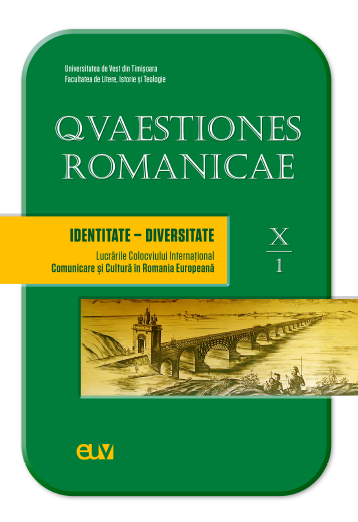Distincția dintre tetic și categoric în limba română. Unele repere
Abstract: (The Distinction between Thetic and Categorical in Romanian. Some Highlights) The Japanese linguist Sige-Yuki Kuroda implemented into twentieth-century linguistics the theory of the two fundamental types of judgments – thetic and categorical – “outlined” by the philosopher J. G. Fichte, proposed by Franz Brentano and developed by his disciple Anton Marty. According to Kuroda (1972), who applied this theory to the syntax of the Japanese language, the thetic judgment is a simple judgment, which “represents a simple recognition or rejection of the material of a judgment” (154), and the categorical judgment is a double judgment because “it consists in two acts: one of the recognition of that which is to be made the subject, and the other, the act of affirming or denying what is expressed by the predicate about the subject” (1972, 154). With reference to the Romanian language, Eugeniu Coșeriu (1994) highlighted a manifestation of the distinction thetic – categorical, in the ratio between “the constructions announcing a fact or an event” (thetic) (76), in which the predicate appears in the initial position, and “the constructions that say something about something” (categorical) (76), in which the subject occupies the first position. For example: “– What's going on? – A ship is coming.” (thetic) versus “A ship arrives every day at 3 o'clock in the afternoon.” (categorical) (Coșeriu 1994, 76). This paper addresses the distinction between thetic and categorical in Romanian, with special regard to the specificity and the functionality of the thetic constructions. Beyond a description of the thetic phenomenon, our approach aims to show the relevance of the opposition between thetic and categorical in a didactic context, presenting the difficulties derived from the respective distinction in the teaching/learning the Romanian as a foreign language.
Keywords: categorical, judgment, Romanian, Romanian as a foreign language, thetic.
Rezumat: Lingvistul japonez Sige-Yuki Kuroda a implementat în lingvistica secolului al XX-lea teoria privind cele două tipuri fundamentale de judecăți – cea tetică și cea categorică – „conturată” de filozoful J. G. Fichte, elaborată de Franz Brentano și dezvoltată de discipolul său, Anton Marty. După Kuroda (1972), care a aplicat teoria în cauză la sintaxa limbii japoneze, judecata tetică este o judecată simplă, ce „reprezintă simpla recunoaștere sau respingere a materiei unei judecăți” (154), iar judecata categorică este o judecată dublă, deoarece „ea presupune două acte: unul de recunoaștere a ceea ce urmează să fie instituit subiect, iar celălalt, de afirmare sau de negare a ceea ce este exprimat prin predicat despre subiect” (1972, 154). Cu referire la limba română, Eugeniu Coșeriu (1994) a subliniat o manifestare a distincției tetic – categoric în raportul dintre „construcțiile care constată un fapt sau un eveniment” (tetice) (76), în care predicatul apare în poziție inițială, și „construcțiile care spun ceva despre ceva” (categorice) (76), în care subiectul ocupă prima poziție. De pildă: „– Ce se întâmplă? – Sosește o corabie.” (tetic) versus „O corabie sosește în fiecare zi la ora 3 după-masă.” (categoric) (Coșeriu 1994, 76). Lucrarea de față abordează distincția dintre tetic și categoric în limba română, cu privire specială asupra specificității și funcționalității construcțiilor tetice. Dincolo de o descriere a fenomenului tetic, demersul nostru vizează și relevanța opoziției dintre categoric și tetic în context didactic, prezentând dificultățile derivate din distincția respectivă în predarea/învățarea limbii române ca limbă străină.
Cuvinte-cheie: categoric, judecată, limba română, limba română ca limbă străină, tetic.
